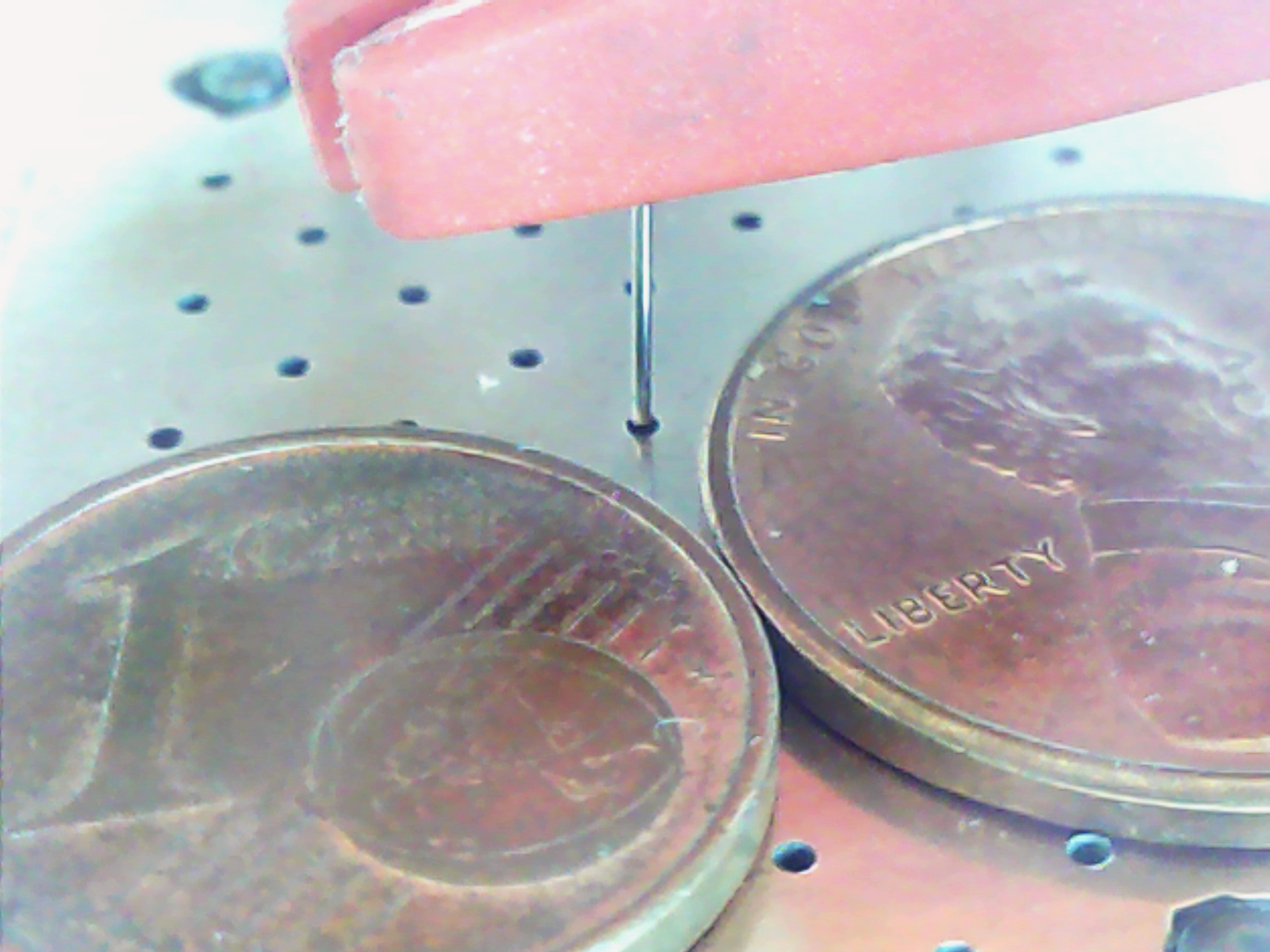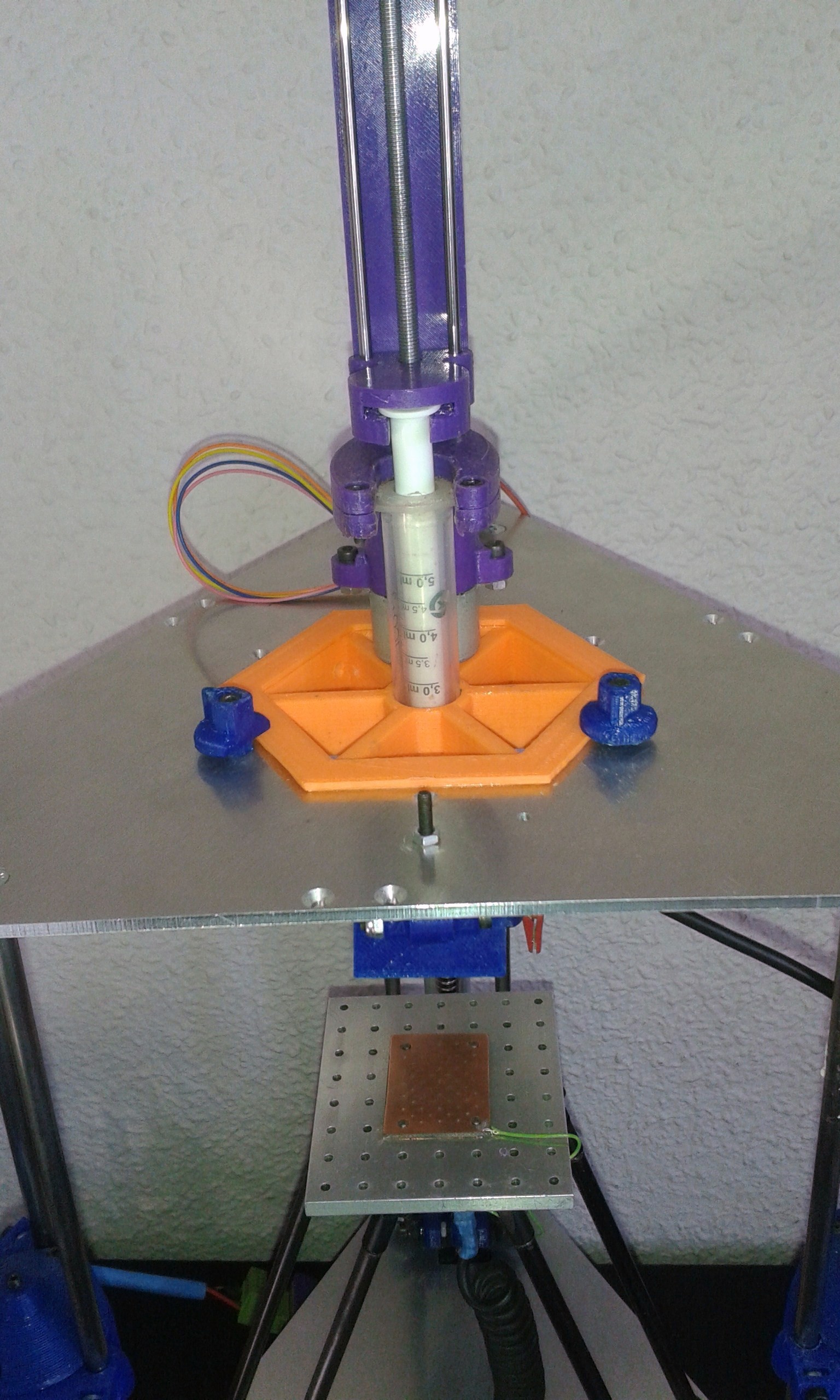TwinTeeth: The PCB mini-factory
Diyouware TwinTeeth is a open-source PCB mini-factory targeted to the electronic hobbyists.
Diyouware TwinTeeth is a open-source PCB mini-factory targeted to the electronic hobbyists.
To make the experience fit your profile, pick a username and tell us what interests you.
We found and based on your interests.
We developed an alternative method for making PCB vias through-hole.
There are several commercial products for making DIY PCB vias. Some based on special pins made for this purpose but they are ugly, cost money and difficult to install. Others methods are based on conductive epoxy which also is expensive and resistivity is not good.
Electroplating is the method used by the PCB industry. There are on the internet some interesting experiences, but all of them require special equipment and unpleasant chemical products difficult to find.
The traditional DIY method consists in threading a wire through the holes and then soldering it and then cutting it off. For example, if we have 100 vias in our PCB, we have to insert the thin wire on each hole, cut it and solder it 200 times. This is time-consuming, but also tedious, absurd, prone to failures and produces a melancholic state of mind.:-)
So we decide to innovate in this area developing a new method which consists in drilling blind vias instead of holes and filling them with conductive ink.
Really we don’t need holes to make vias. Well, we need holes, but not through-holes. I mean, we can avoid drilling to bottom copper layer and make tiny wells instead of vias!
Then fill the wells injecting the conductive ink. We do it from inside, inserting a needle into the well, mainly because it will be difficult to fill it from outside due to the air inside the well and also surface tension forces.
Both are simple task for a PCB robot.

We published all the information in our blog:

We published a lead-screw improvement to the original design. We decided to reduce the size of the acme screws to reduce possible wobble and we also designed a new lead-screw top support which will hold the bearing and a bolt to adjust the motor coupler flexibility.
You can see the new design here:
We published last chapters of the "How to use it" tutorial.
You will find them here http://www.diyouware.com/twth_useit in English.
And here http://www.diyouware.com/es/twth_useit in Spanish.
The assembling guide is also complete:
English:
http://www.diyouware.com/twth_buildit
Spanish:
http://www.diyouware.com/es/twth_buildit
We published new chapters of the TwinTeeth building tutorial:
Chapter 4 – Wiring the electronics
Chapter 5 – Installing the Software
Chapter 6 – Calibrating the robot
Chapter 7 – Assembling the Laser ToolHead
Chapter 8 – Assembling the Drilling Toolhead
Chapter 9 – Assembling the Solder Paste Dispenser Toolhead
You can find them here in English:
http://www.diyouware.com/twth_buildit
and here in Spanish:
http://www.diyouware.com/es/twth_buildit
Diyouware Team
We have just published a new chapter of the TwinTeeth building tutorial.
You can find it here in English:
http://www.diyouware.com/twth_buildit
and here in Spanish:
http://www.diyouware.com/es/twth_buildit
Our plan is to write and publish a chapter every week.
We will keep you informed.
Diyouware team.
Create an account to leave a comment. Already have an account? Log In.
Love it!
Just wondering why you went for a delta approach (creating a quite tall machine) when all you really need here is X & Y? (ok ok, and rougly 2-3cm of Z) just for the fancy ascetics/because you can? or is there an idea behind it?
Become a member to follow this project and never miss any updates
By using our website and services, you expressly agree to the placement of our performance, functionality, and advertising cookies. Learn More
Mainly because in that configuration the laser beam is not attached directly to the motion system. We already tested a traditional cartensian robot and we could not avoid vibrations and resonances produced by the mechanics and the belts. Also the inverted delta configuration allows us to change the tool in a question of seconds. This is very important in a multi-functional robot. We don't care too much about the Z axis lenght because the robot was mainly designed to process PCBs and 3D print small things.